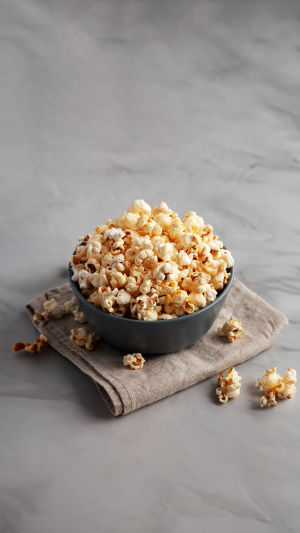Have you ever wondered why popcorn pops? That sudden burst transforming a tiny kernel into a fluffy treat is not just magic—it's a fascinating natural process based on physics and chemistry.
Let's dive into the science behind what makes popcorn pop and why this snack has been loved worldwide for centuries.
<h3>The Structure of a Popcorn Kernel</h3>
Popcorn kernels look small and simple, but their structure is key to their popping power. Each kernel has three main parts: the pericarp (outer shell), the endosperm (starchy inside), and a small amount of moisture trapped within. The pericarp is extremely hard and moisture-resistant, which allows pressure to build up inside as the kernel heats.
<h3>The Role of Moisture in Popping</h3>
Inside every kernel is about 13-14% moisture, locked away within the starchy endosperm. When the kernel is heated, this moisture turns into steam. Because the pericarp is hard and impermeable, the steam cannot escape. Pressure begins to rise inside the kernel, reaching an astonishing 135 psi (pounds per square inch) at about 180°C (356°F).
<h3>Pressure Builds—Then Explodes!</h3>
Once the pressure inside becomes too great, the pericarp suddenly ruptures. This explosion is the "pop" you hear. When the shell breaks, the steam rapidly expands, and the soft starch inside inflates and cools quickly into the airy shape we recognize as popcorn.
<h3>The Unique Nature of Popcorn Kernels</h3>
Not all corn kernels pop. Popcorn kernels have a unique combination of moisture content and a very strong outer shell. Other types of corn, like sweet corn or field corn, do not have this tough pericarp or the ideal moisture level, so they cannot pop in the same way. This is why popcorn is a special variety scientifically classified as Zea mays everta.
<h3>Why the Shape Changes</h3>
The starch inside the kernel gelatinizes as it heats, turning into a pliable gel. When the shell bursts, the gel quickly expands and cools into a foam-like structure. This sudden change from a hard seed to a soft, crunchy puff is what makes popcorn so unique and enjoyable.
<h3>Factors Affecting Popping Quality</h3>
Several factors influence how well popcorn pops. The moisture content must be just right—too dry, and the kernel won't build enough pressure; too wet, and it might pop prematurely or become chewy. Storage conditions also matter; popcorn kept in airtight containers retains moisture longer, improving popping results.
<h3>Interesting Scientific Applications</h3>
Scientists study popcorn to better understand rapid phase changes and pressure dynamics in small containers. The popping mechanism has inspired engineers in various fields, including food processing and materials science, demonstrating how everyday phenomena can lead to scientific advances.
<h3>Popcorn Around the World</h3>
Popcorn is not just a snack—it's part of cultural traditions in many countries. Native Americans were the first to discover and use popcorn, and it has since become a global favorite. Different cultures enjoy it with various seasonings, but the popping process remains the same everywhere.
<h3>Have You Ever Tried Popping Corn Differently?</h3>
Whether using a microwave, stovetop, or popcorn machine, the physics behind popping remains constant. Have you experimented with different popping methods or kernels? Understanding the science might help you achieve that perfect pop every time.
<h3>Conclusion: The Science in Your Snack</h3>
Next time you hear the satisfying pop of popcorn, remember it's a fascinating interplay of moisture, pressure, and starch changing states. This simple snack is a brilliant example of science in everyday life—an explosion of chemistry and physics right in your kitchen!
What's your favorite popcorn flavor? Feel free to share and let's keep the popping conversation going!





